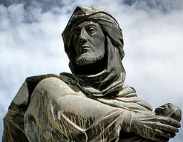
The Moors
In order to appreciate much of Spain’s great architecture, art and literature, it’s necessary to look back to a time when the Moors occupied Spain. The name Moors – or Arabs – refers to populations of Black Africans from Northern Africa who invaded Spain and the entire Iberian Peninsula from 711 to around 1492. The Moors were Muslim and they brought their religion, language and Islamic architecture with them to Spain. Because the Moors inhabited Spain for 800 years, they left a lasting cultural impression that is existent is modern day Spain.
In 711 the Moors entered Spain from Morocco with an army of around 10,000 men. They used violence and threatened to kill anyone who refused to convert to their Islamic religion and beliefs. Soon after entering Spain, the Moors made the Toledo their capital, as well as setting up strong holds in Ejica, Cordoba, Seville and Merida. By 1200, it was estimated that nearly 5.6 million of the Iberian Peninsula’s 7 million inhabitants became Muslims.
In the 8th century, Christian states located in Northern and Western Spain began the “reconquest” – also known as the Reconquista. Fierce battles and wars waged across the entire Iberian Peninsula to convert the Muslims to Christianity and expel them from the region. In 1212, the Moors were drove out of Central Spain and Toledo was no longer considered the Spanish capital. In January of 1492, the final Moorish stronghold in Granada surrendered to the Christian armies led by Ferdinand and Isabel.
The lasting impression left by the Moors can be seen in the great Islamic architecture. Islamic architecture includes castles, palaces, towers and domed-mosques with lavish interiors of gold and Arabic calligraphy. Some of the best existing places to visit to see examples Islamic architecture are: La Mezquita in Cordoba, La Alhambra palace, the Giralda, the city of Medina Azahara, San Cristo de la Luz in Toledo and the exquisite baths at Alhama de Granada.
Plus, some of Spain’s best and literature art was influenced by the Moors. For example, the book Don Quixote by Miguel de Cervantes – which is considered one of the best literary works ever written – uses a fictitious Moorish character to chronicle the adventures of Don Quixote. Great paintings, such as La Rendicion de Granada by Francisco Pradilla Ortiz, depict battles and Christian horseback warriors during the Reconquista. Tourists can also check out a statue of the horseback rider El Cid – a popular hero from the Reconquista – in Burgos, the capital of Sancho.
 Follow
Follow


